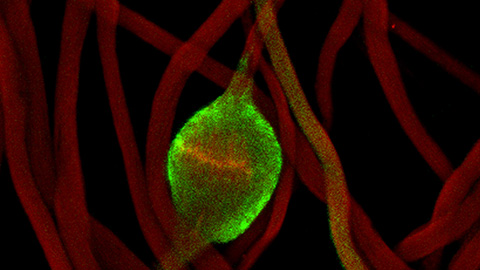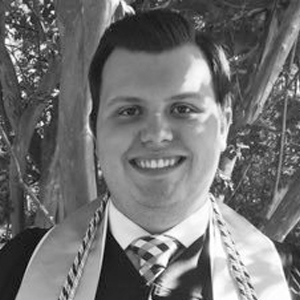Partial agonist drug design for cannabinoid receptors
G protein–coupled receptors, or GPCRs, are essential to signal transduction. The human genome encodes hundreds of GPCRs, which have been associated with diseases such as diabetes and cardiovascular abnormalities. Consequently, many GPCRs are drug targets.
Cannabinoid receptors are GPCRs expressed in our central and peripheral nervous systems as well as our immune system. Drugs targeting cannabinoid receptors 1 and 2, known as CB1 and CB2, initially showed great promise for the treatment of pain, obesity and inflammation but were removed from the market after they were shown to have adverse effects on patients. Researchers found that full agonists, which maximally activate the receptors when bound, were especially harmful. Therefore, many have turned their attention to the potential of partial agonists, which produce a smaller effect.
Delta-9-tetrahydrocannabinol, or Δ9-THC, is the euphoric psychoactive compound in marijuana. Researchers have found that it acts as a partial agonist of CB1 and has positive effects in the treatment of Parkinson’s and other neurodegenerative diseases. However, the Food and Drug Administration still bans the sale of most THC products.
Soumajit Dutta, a Ph.D. candidate at the University of Illinois at Urbana–Champaign, uses molecular dynamic, or MD, simulations to study ligand interactions with CB1 in hopes of understanding how full and partial agonists interact with the receptor. This could enable selective drug development targeting cannabinoid receptors. Combining his interests in computation and in mechanisms of allosteric modulation, Dutta and his team used computational analysis to understand why THC only partly activates CB1. They recently published this research in the Journal of Biological Chemistry.
Using ligand and protein structures from the literature, Dutta performed unbiased molecular dynamics simulation with analysis by Markov state modeling to simulate the binding of THC to CB1 in two poses, one that resembles agonist binding and one that resembles antagonist binding.
Full agonists of CB1 “overstimulate the receptor, leading to negative side effects such as seizures or loss of motor function,” Dutta said, because a full agonist fills the large binding pocket, overexciting the receptor. On the other hand, THC is small and does not occupy much space in the binding pocket, allowing mobility within the pocket in order to activate the receptor without overstimulating.
An essential component in the activation of the CB1 receptor is called the toggle switch, a tryptophan residue located in the binding pocket. Dutta made the novel finding that Δ9-THC had less interaction with the toggle switch residue within the active site pocket than a full agonist, which could explain why it works as only a partial agonist.
This research provided essential information about the mechanism of Δ9-THC binding to CB1 and CB2 so that drug developers can begin to design scaffolds to target CB1 specifically. They hope such molecules will alleviate the negative side effects seen in early agonist cannabinoid receptor drugs. Meanwhile, Dutta plans to build on his research by looking at additional ligands in the database that also act as partial agonists on cannabinoid receptors.

Enjoy reading ASBMB Today?
Become a member to receive the print edition four times a year and the digital edition monthly.
Learn moreGet the latest from ASBMB Today
Enter your email address, and we’ll send you a weekly email with recent articles, interviews and more.
Latest in Science
Science highlights or most popular articles

Building the blueprint to block HIV
Wesley Sundquist will present his work on the HIV capsid and revolutionary drug, Lenacapavir, at the ASBMB Annual Meeting, March 7–10, in Maryland.

Gut microbes hijack cancer pathway in high-fat diets
Researchers at the Feinstein Institutes for Medical Research found that a high-fat diet increases ammonia-producing bacteria in the gut microbiome of mice, which in turn disrupts TGF-β signaling and promotes colorectal cancer.

Mapping fentanyl’s cellular footprint
Using a new imaging method, researchers at State University of New York at Buffalo traced fentanyl’s effects inside brain immune cells, revealing how the drug alters lipid droplets, pointing to new paths for addiction diagnostics.

Designing life’s building blocks with AI
Tanja Kortemme, a professor at the University of California, San Francisco, will discuss her research using computational biology to engineer proteins at the 2026 ASBMB Annual Meeting.

Cholesterol as a novel biomarker for Fragile X syndrome
Researchers in Quebec identified lower levels of a brain cholesterol metabolite, 24-hydroxycholesterol, in patients with fragile X syndrome, a finding that could provide a simple blood-based biomarker for understanding and managing the condition.

How lipid metabolism shapes sperm development
Researchers at Hokkaido University identify the enzyme behind a key lipid in sperm development. The findings reveal how seminolipids shape sperm formation and may inform future diagnostics and treatments for male infertility.

